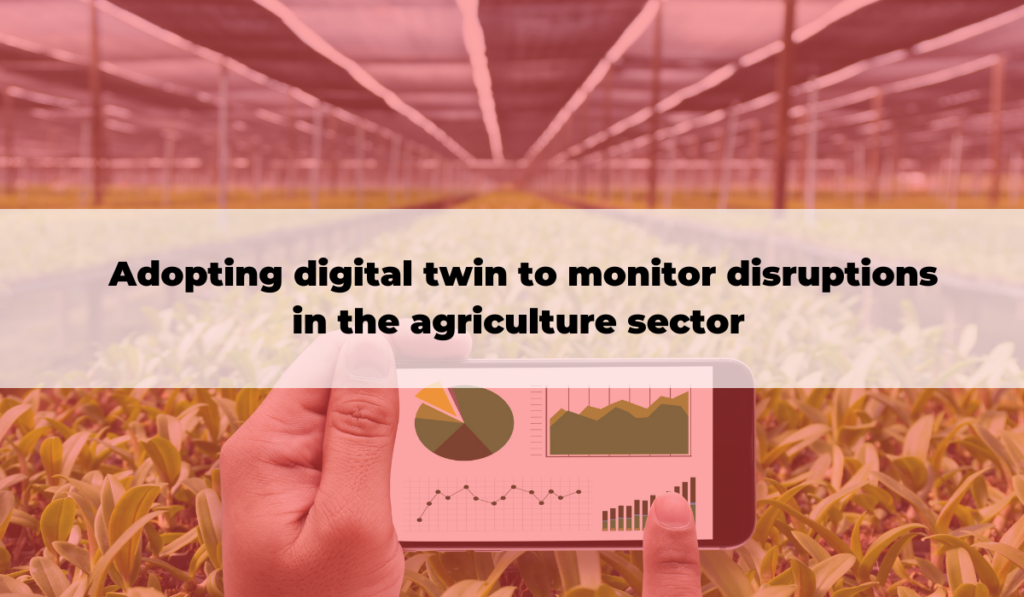Digital Twin technology is a game-changer for farmers aiming to effectively manage their processes, systems, and facilities. With EU-funded programs backing these innovations, the agriculture sector’s long-held dream of meeting future challenges head- on is becoming a reality. It’s not just about keeping up—it’s about staying ahead, leveraging cutting-edge tools to transform how farming works in an increasingly complex world.

European commission invests € 138 millions to boost agriculture sector digital transformation
Tasty tomatoes, juicy oranges, thousands of squares of fresh salad, cornfields and vineyards as far as an eye can see. “Enjoy it’s from Europe” says the slogan. With this claim, European Commission (EC) just launched a new portal to boost the visibility of EC initiatives co-finances or directly organises to promote the great variety of EU agricultural produce. To quote the European Union, the old continent agriculture offers vibrant rural areas and quality agricultural products. The sector provides regular jobs to 20 million workers who must produce for over 440 million people. While the long-term challenge will be to double world production by 2050 to face population growth and food habits, the short and middle-term rolling coasters would be for the sector to find the right instruments and tech to cope with digitalization acceleration.
Revolutionising agriculture with the most innovative research and technology can definitively bring precision, efficiency and sustainability to farmers who have to deal more than ever with radical climate changes and overpopulation. For consumers, digitalization brings a new level of transparency—and with it, greater safety. From farm to supermarket shelf, products can now be traced every step of the way. With food security on the line and sustainable production becoming non-negotiable, EU programs like Horizon 2020 and Horizon Europe have stepped in. These initiatives have already injected up to €138 million into the sector, aiming to make rural communities not only more attractive but also smarter and more sustainable, tackling the challenges of isolation and improving access to essential services. It’s about creating a future where technology and tradition work hand in hand.
Digital technologies revolutionising the agricultural sector
In a sector that remains one of the least digitised, Digital Twin technologies and artificial intelligence might seem like a UFO to many farmers. Yet, their potential to revolutionise agriculture is nothing short of extraordinary. Imagine controlling weather conditions, minimising waste, cutting back on pesticides, and speeding up time-to-market, all while slashing energy usage. It’s the kind of transformation that could take farming from the fields of tradition straight into a new era of efficiency and sustainability.
The increasing unpredictability of weather patterns has left many farmers vulnerable to losing their entire annual production in just a matter of hours. A recent example from Lleida, Catalonia illustrates this: hailstorms wiped out 70 to 80% of nectarine farms. The problem here is not a punctual one in the province, the meteorological phenomenon happens 10 to 12 times a year. However, just across the Pyrenees, a potential solution has emerged, developed by the French startup Ombrea. By exploiting artificial intelligence, Ombrea’s dynamic solar panel system not only shields crops from extreme weather conditions but also generates renewable energy, offering farmers a dual benefit in the fight against climate challenges.
Digital Twin beneficiaries the Change2Twin case Legumbres la Tierrina Vaqueira S.L.U.
Digital Twin technologies have the potential to revolutionise the agrifood sector in ways that might seem almost too good to be true. By fine-tuning resource management, the quality of products can improve dramatically. Smart agriculture nevertheless has still a long journey to go through. Mainly because Digital Twin adoption requires a certain digital maturity but thanks to cascade programmes such as Eu funded project Change2Twin, the sector can benefit from the most advanced technology in the market. Consider the case of Legumbres la Tierrina Vaqueria, a company founded in 2005 and dedicated to the cultivation, processing, and packaging of fresh and dried beans, including the renowned “Faba de Asturias” with Protected Geographical Indication, as well as other eco-labeled legumes.
Using a digital twin, the company monitors the journey of fresh bean pods from production to storage, tracking all moves. This system captures key environmental data as the beans pass through the warehouse, ensuring optimal storage conditions. What’s more you may say, they have developed a web application that uses historical data to predict how much produce will enter storage in real time. The system also features a traceability module, logging every batch and each step along the way, plus a dashboard for visualising the entire process. In short, they have produced data to gain precision, efficiency, and foresight.
Digital Twins technologies present so many opportunities for the growth of the sector but mostly they ensure Europe remains the harvest place in the world where tasty tomatoes and oranges are delivered to the customers hands in optimal conditions.
Marjorie Grassler